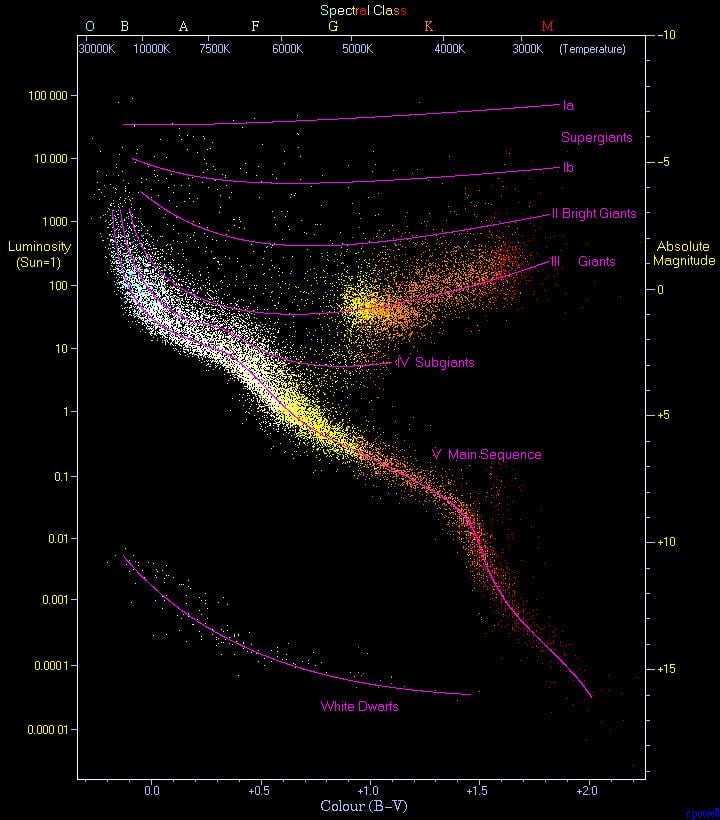 | ||
HD 154088 is a seventh magnitude metal-rich K-type main sequence star that lies approximately 58 light-years away in the constellation of Ophiuchus. The star is orbited by a hot Super-Earth.
Contents
Properties
HD 154088 is a modestly bright star that lies at the bottom of Ophiuchus, near to the border with Scorpius and near to the plane of the Milky Way. The star was recognised as a high proper motion star during the last century, and early Earth-based parallax measurements such as that of the Gliese Catalogue of Nearby Stars indicated a distance of about 50 light-years.
The star has a spectral type of K0V, indicating that it is a main sequence star that is about 350 degrees cooler than the Sun. On the Hertzsprung-Russell diagram (left), the star lies slightly above the main sequence. This is because the star is very metal-rich; with an Fe/H of 0.3 dex the star has about twice the solar abundance of iron, which makes HD 154088 fall into the somewhat vague group of super metal-rich (SMR) stars. The giant planet occurrence rate of Fe/H = 0.3 stars is on the order of 30%, but HD 154088 is not currently known to host any giant planets.
HD 154088 has a pronounced magnetic field. It also has a magnetic cycle similar to the Sun, though its length is not well constrained.
Planetary system
A planet orbiting HD 154088 discovered with the HARPS spectrograph was announced in September 2011. With a minimum mass of 6 Earth masses, the companion falls into the regime of Super-Earths.
HD 154088 is also being observed under the Keck Eta-Earth radial velocity survey. HD 154088 b is a close match for planet candidate 1 (orbital period = 18.1 days, minimum mass = 6.5 M⊕), so they may be the same detection.
